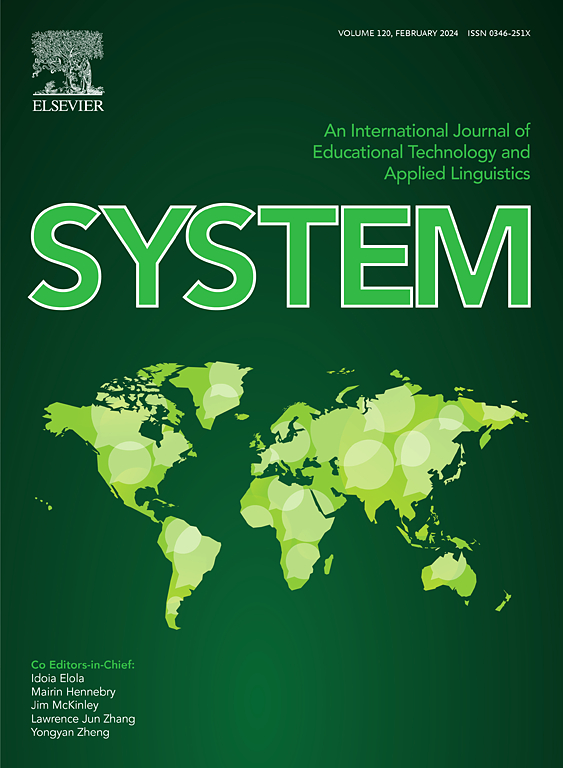人工撰写与chatgpt生成文本:英文研究文章摘要的立场
IF 5.6
1区 文学
Q1 EDUCATION & EDUCATIONAL RESEARCH
引用次数: 0
摘要
虽然ChatGPT作为一种写作辅助工具展示了巨大的潜力,但它也有其局限性。本文研究了在人工撰写和ChatGPT生成摘要中使用立场的情况,以评估ChatGPT在生成学术文本中的性能。构建了600篇人工摘要和600篇chatgpt生成摘要的语料库,采用基于理论和语料库驱动的方法和混合方法设计,构建了语料库中的立场系统,并探索了立场在语料库中的使用。立场,指的是作者的判断、评价、评价和感受,可以被解释为一个三维系统:类型(认知、情感)、价值(高:促进和积极影响,低:阻碍和消极影响)和取向(显性、隐性)。在这两种类型的摘要中,立场标记语主要用来含蓄地表达认知态度和积极态度。然而,与人类撰写的摘要相比,chatgpt生成的摘要明显更加以影响为导向。这两种类型的抽象在立场使用上的异同可归因于抽象的本质和ChatGPT的底层机制。本研究为理解和分析语篇立场提供了理论框架。这一发现对学术英语写作和教学以及人工智能的进步和创新具有启示意义。本文章由计算机程序翻译,如有差异,请以英文原文为准。
Human-written vs. ChatGPT-generated texts: Stance in English research article abstracts
While ChatGPT demonstrates great potential as a writing assistant tool, it is not without its limitations. This article investigates the use of stance in human-written and ChatGPT-generated abstracts to evaluate the performance of ChatGPT in generating academic texts. It built a corpus of 600 human-written and 600 ChatGPT-generated abstracts, adopted a theory-informed and corpus-driven approach and a mixed-methods design, constructed a system of stance, and explored the stance use in the corpus. Stance, referring to the writer's judgments, evaluations, assessments, and feelings, can be interpreted as a three-dimensional system: type (epistemic, affective), value (high: boosters and positive affect, low: hedges and negative affect), and orientation (explicit, implicit). In both types of abstracts, stance markers are mainly used to express the epistemic and positive attitudes implicitly. However, compared to the stance in human-written abstracts, those in ChatGPT-generated abstracts are significantly more affect-oriented. The similarities and differences in the stance use between the two types of abstracts are ascribable to the nature of abstracts and the underlying mechanism of ChatGPT. This study provides a theoretical framework for understanding and analyzing stance in texts. The findings offer implications for academic English writing and teaching, and the advancement and innovation of AI.
求助全文
通过发布文献求助,成功后即可免费获取论文全文。
去求助
来源期刊

System
Multiple-
CiteScore
8.80
自引率
8.30%
发文量
202
审稿时长
64 days
期刊介绍:
This international journal is devoted to the applications of educational technology and applied linguistics to problems of foreign language teaching and learning. Attention is paid to all languages and to problems associated with the study and teaching of English as a second or foreign language. The journal serves as a vehicle of expression for colleagues in developing countries. System prefers its contributors to provide articles which have a sound theoretical base with a visible practical application which can be generalized. The review section may take up works of a more theoretical nature to broaden the background.
 求助内容:
求助内容: 应助结果提醒方式:
应助结果提醒方式:


